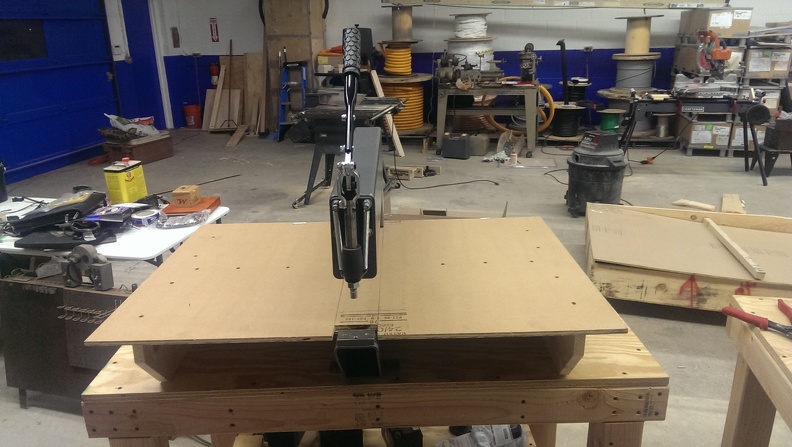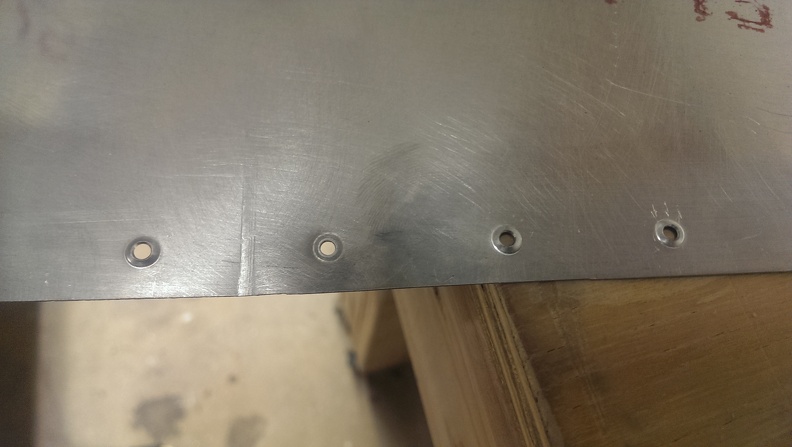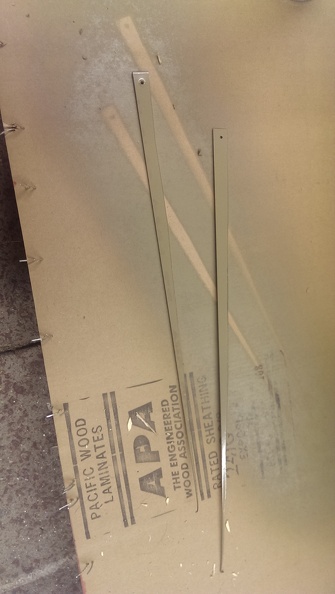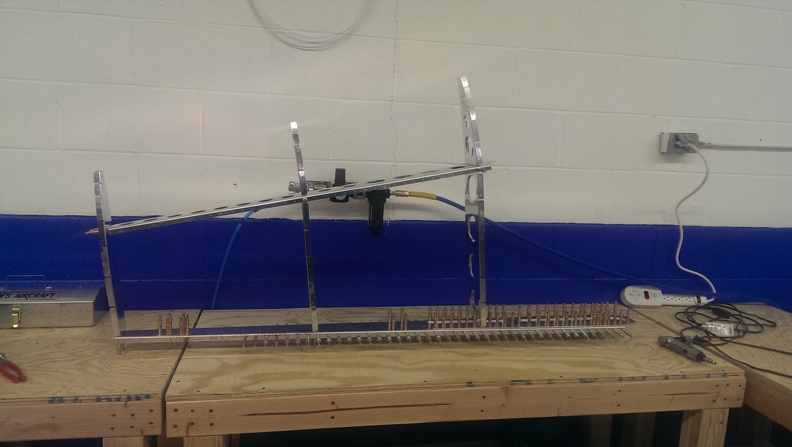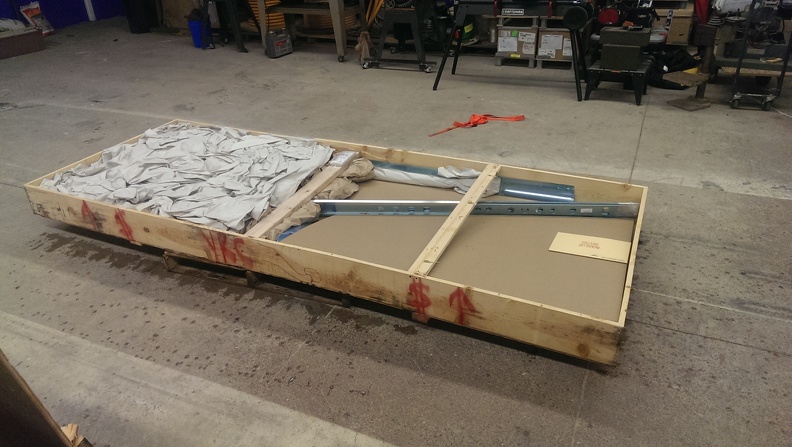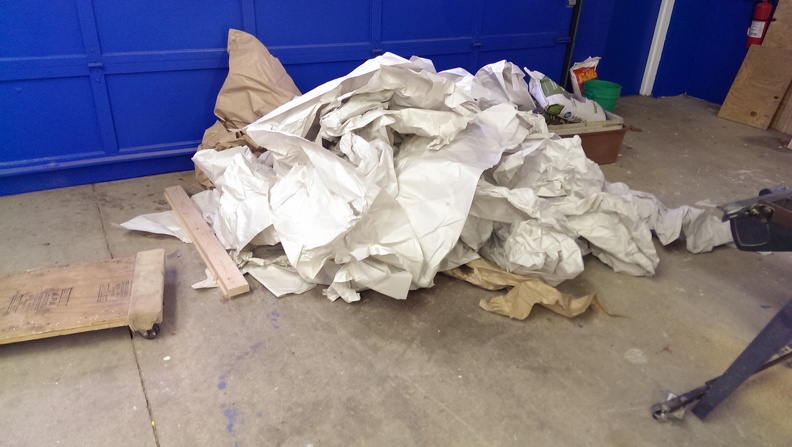Today started off great. I had parts primered, ready to rivet. First step was to attached the Rudder stops to the top of the bottom Rudder attach bracket. This came out great.
Next I reattached the rear spar caps, rear spar double, to the rear spar with clecos. After that I began riveting per what the drawing showed. Everything was looking great till I had to do the inside holes of the top rudder attach bracket. Not really sure what I was thinking, but it wasn’t anything smart. I ended up squeezing the rivet with my squeezer upside down and collapsed the rear spar. It wasn’t pretty and no amount of trying to straighten it out was helping. So I ended up ordering another one and I expect it to be here tomorrow. I had a blast drilling out all the rivets. The pictures of don’t really give it justice. In the mean time I finished up what steps I could. Which really wasn’t much. I got the interior of the skeleton riveted together which was about a grand total of about 15 rivets. I also mounted the skeleton inside the skin so I can really get a look and generate a game plan on how to rivet the skin on. I am not looking forward to that yet.





